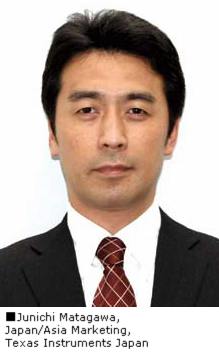The “eye” of a camera lies behind the lens, residing on wafers of silicon comprising an image sensor. A&S delves into key figures, trends and applications for video components.
The “eye” of a camera lies behind the lens, residing on wafers of silicon comprising an image sensor. A&S delves into key figures, trends and applications for video components.
Surveillance forms the bedrock of security, as crisp images help identify threats. Inside of every camera lies an image sensor, converting photons into electrical signals. With Frost & Sullivan predicting video's market share to grow through 2012 with the IP boom, image sensors are a major part of the security picture.
Two types of image sensors are deployed for video security: charge-coupled devices (CCD) and complementary metal-oxide semiconductors (CMOS). “The aggregate surveillance image sensor market in 2008 is estimated to be close to 40 million sensors,” said Roy Karunakaran, Senior Product Marketing Manager of OmniVision Technologies, a provider of CMOS sensors. “Of these sensors, 30.5 percent are CMOS image sensors, while 69.5 percent are CCD.”
CCDs currently make up the majority of image sensors — dominated by Sony, Sharp and Panasonic — but some experts predict a shift. “According to estimates from Japanese market research firm TSR (Techno Systems Research), CMOS will see its market share near 45 percent by 2012,” Karunakaran said. “According to this same report, CCDs will remain stable but eventually see a decline in units by 2012.”
Demand for image sensors has increased. “Pixim believes market growth for image sensors used within the video security market have grown an average of 15 percent over the past two years,” said John Monti, VP of Marketing and Business Development for Pixim. The company develops its Digital Pixel System, comprising a CMOS sensor, image processor and real-time software.
While Japanese companies dominate the CCD market, the CMOS market is younger and has more players. Micron, which was acquired by Altera, and Pixim are major CMOS players, Matagawa said.
Several other image sensor providers figure prominently. “According to the 2008 TSR report, OmniVision is the market leader in CMOS sensors,” Karunakaran said. “The other major CMOS sensor vendor is Aptina.”
 Security Applications
Security Applications
In general, CCDs are used in conventional analog cameras, while network cameras deploy CMOS, said Junichi Matagawa, Japan/Asia Marketing, Digital Image Sensor Products, Worldwide Application Specific Products, Texas Instruments Japan. “Recently, CMOS sensors are used for wide dynamic range or high resolution in network camera applications.”
Edge devices are newcomers to the camera scene, with one box holding image sensors, processors loaded with video analytics and sometimes storage. “One niche market with great potential is intelligent cameras, which today comprise a tiny percentage of cameras sold,” Monti said. Pixim's solution is onboard some intelligent cameras for high-profile installations, such as ioimage cameras at the Vatican in Rome.
Product Trends
While CCDs have more market share than CMOS, several CMOS developments indicate they are the next focus for security imaging. “Security cameras have definitely started trending towards CMOS image sensors, with even Sony and Sharp beginning to offer them,” Karunakaran said. “It would be difficult for someone to make a business case for a new CCD vendor.”
Some CMOS sensor yield higher resolutions than analog CCD sensors. High-definition (HD) video at 720 pixels or 1080 pixels will be mainstream soon, Karunakaran said.
A Texas Instruments solution offers SVGA resolution (800 x 600), which exceeds analog cameras in both horizontal and vertical lines at 560 TV lines, Matagawa said.
This boost in resolution is due to reduced pixel size, Karunakaran said. Pixels went from 9 by 9 microns a few years ago to 1.75 microns in OmniVision's high sensitivity pixel architecture.
Smaller pixels mean more of them can fit on an image sensor. “The industry is now readying 1.4 micron pixel technology, which should further reduce size while retaining the same quality levels,” Karunakaran said. “A smaller amount of processed silicon surface means lower cost once the new products start reaching high volumes.”
 While CMOS technology is less sensitive in low-light conditions compared to CCD, this is an advantage in high-decibel ranges, when blooming can cause CCD image sensors to lose detail. “The new wide dynamic range CMOS image sensor from Texas Instruments offers high image quality, exceeding conventional CCD sensors, for advanced video surveillance cameras,” Matagawa said. The sensor “contains a high response amplifier in the pixel and reset noise reduction circuit that provides CCD-level high sensitivity and high signal to noise ratio, which has not been achieved by conventional CMOS sensors.”
While CMOS technology is less sensitive in low-light conditions compared to CCD, this is an advantage in high-decibel ranges, when blooming can cause CCD image sensors to lose detail. “The new wide dynamic range CMOS image sensor from Texas Instruments offers high image quality, exceeding conventional CCD sensors, for advanced video surveillance cameras,” Matagawa said. The sensor “contains a high response amplifier in the pixel and reset noise reduction circuit that provides CCD-level high sensitivity and high signal to noise ratio, which has not been achieved by conventional CMOS sensors.”
Some CMOS sensors can even compensate for light sources. “During 2008, Pixim released several innovative technologies including its award-winning Enhanced Flicker Reduction (EFR) technology,” Monti said. “EFR is able to provide accurate color and eliminate flicker in cameras capturing modulated light sources, such as LEDs and fluorescent lights, even when the camera is DC-powered, such as in Power over Ethernet cameras.”
As cameras must function in extreme lighting conditions, image sensors have to adapt. “Since these light sources are 'green,' their use is expanding rapidly around the world,” Monti said.
Comparing CMOS and CCD Technologies
CCD
The key advantage of CCD sensors is their sensitivity to light. “Based on their low- light sensitivity features, high-end professional surveillance camera requirements have almost exclusively been addressed by CCD sensors,” Karunakaran said. "With the introduction of CMOS image sensor innovations, low light sensitivity and image quality of CMOS sensors are beginning to equal or better their CCD counterparts.”
CCD strengths include global shutter and good fixed pattern noise, Matagawa said.
However, the strengths of CCD sensors can work against them, as increased light sensitivity under extremely bright conditions erases detail. “Analog CCDs and analog CMOS sensors use old principles to capture and measure light,” Monti said. “These technologies have many issues, such as random noise, limited dynamic range, blooming, smear, high power, interlace or rolling shutter, very high compressed file sizes, et cetera.”
CMOS
CMOS design enables smoother integration with other technologies, scoring a point in its favor. “CMOS imagers are in mainstream technology and other circuits are easier to integrate,” said Rainer Schweer, CIS Manager of Thomson. “For example, CMOS SoC capability and mainstream pricing will nearly squeeze the CCD to death.”
This integration is crucial for the network camera market. “CMOS technology enables the integration of an entire camera system on a single chip, featuring both analog and digital properties,” Karunakaran said. “The CCD sensor is solely dedicated to acquiring data and sending it out in raw analog format, so a separate dedicated chip is needed to convert the signal from analog to digital.”
The ability of CMOS to play nicely with other components can be a selling point. "Integration is necessary to convince customers to make decisions more quickly,” Matagawa said.
Some shortcomings of CCD, such as blooming, random noise and large file sizes, are overcome with CMOS. “The Digital Pixel System technology used by Pixim eliminates these issues with extremely low random noise, accurate color, global electronic shutter, and the industry's smallest file sizes when compressed,” Monti said.
 Other CMOS features give it an edge over CCD technology, including low power consumption — using about a tenth of what CCD devices need. “CMOS sensors also offer a wider operating temperature range, random pixel access and the ability to co-exist with other complex electronic circuitry,” Karunakaran said. "Integrating circuitry in a system using CMOS sensors results in a more compact design — therefore a smaller camera unit — as compared with competing CCD systems and offers reduced cost, due to a lower component count.
Other CMOS features give it an edge over CCD technology, including low power consumption — using about a tenth of what CCD devices need. “CMOS sensors also offer a wider operating temperature range, random pixel access and the ability to co-exist with other complex electronic circuitry,” Karunakaran said. "Integrating circuitry in a system using CMOS sensors results in a more compact design — therefore a smaller camera unit — as compared with competing CCD systems and offers reduced cost, due to a lower component count.
CMOS development is working to catch up with CCDs on sensitivity. “In shrinking pixels, one often must avoid trading off light sensitivity,” Karunakaran said. “It is critical for security cameras to exhibit excellent light sensitivity during night time or other poorly lit conditions.”
With continued development, CMOS light sensitivity is starting to measure up to CCD technology. “For image sensors, sensitivity is commonly measured in terms of how much electrical signal is produced from incident light, or in terms of mV/Lux-Sec,” Karunakaran said. “CMOS sensors are now in the same range as CCD sensors in this respect.”
Standards
There are few universal standards for security image sensors. “The only de facto standard is for physical imager size,” Schweer said, which typically measure 1/2 inch, 1/3 inch and 1/4 inch. “They affect the R&D and business as a requirement and option.”
Most providers establish their own specific standards. “There are presently no industry-wide standards for imaging sensors, so each vendor sets their own R&D and business development priorities,” Karunakaran said.
Texas Instruments is focusing on CMOS and expects high-resolution images to be standard. “The 1.3 megapixel image sensor will be a standard in the network camera format,” Matagawa said.
Pixim sets its own standards for sensor packaging. “Digital Pixel System sensors use modern Ball Grid Array packages, which are soldered to printed circuit boards using standard surface mount technology production lines,” Monti said. “This provides perfect alignment of the sensor during production without any human intervention. Analog CCD sensors must be soldered by hand, with sensor alignment accomplished using tiny shims placed under the sensor by specialized factory personnel.”
An industry-wide imager size will be adopted for increased standardization. "Image sensors must use a 1/3-inch optical format,” Monti said. “Also, they must have a minimum of 100 dB dynamic range to handle common lighting conditions in all outdoor applications.”
Challenges
The image sensor industry has several challenges, ranging from technology to market adoption. CCDs are more mature, so most vendors expect more technical breakthroughs for CMOS imagers.
Improving the low-light performance of CMOS continues to be a technical hurdle. "Currently, technology developments in CMOS image sensor technology are addressing the sensitivity issues that CMOS typically had relative to CCD,” Karunakaran said.
Related to lighting is chip architecture, with different approaches to shuttering. "Developing a high performance global shutter in CMOS sensors would be a chief stumbling block,” Matagawa said.
For market reach, relatively new CMOS companies face daunting odds against established CCD providers. “The key limiter of the market share growth of Digital Pixel System products is brand awareness,” Monti said. “Pixim has a small, but growing, brand value compared with the large Japanese competitors.”
Some vendors consider the industry's conservative attitude to be a challenge. “The chief stumbling block is none other then the industry's own speed of adaptation,” Schweer said.
While image sensors have several obstacles to overcome, the overall outlook for them remains bright. As cameras figure prominently into security solutions, capturing clear images make image sensors crucial security components. Continued innovation, stronger market awareness and increased integration will spur image sensor development to new heights.